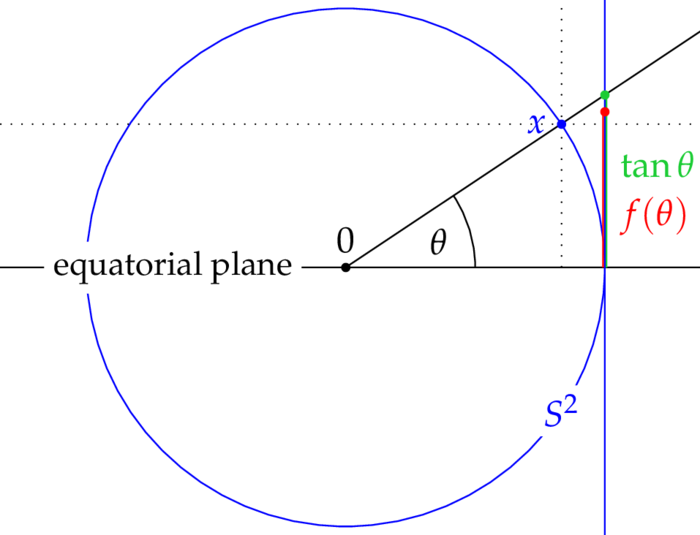Find a smooth increasing function $f:(-\pi/2,\pi/2)\rar\R$, $f(0)=0$, such that the
Mercator map $F:(M,g)\rar(-\pi,\pi)\times\R$, $(\vp,\theta)\colon=(\vp,f(\theta))$ is conformal. Here $g$ denotes the Riemannan metric $g$ of
exam and $(-\pi,\pi)\times\R$ carries the canonical Euclidean metric. The Mercator map is also called cylindrical projection and has been rampant in navigation. Remarkably, the problem of finding an appropriate function $f$ was solved in 1668 by
James Gregory and two years later by
Isaac Barrow, at a time when calculus was not yet well established.

